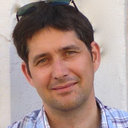Sarcopenia in stroke-facts and numbers on muscle loss accounting for disability after stroke.
Keywords
Abstract
Stroke is the third leading cause of death and the leading cause of disability in Western countries. More than 60% of patients remain disabled, 50% of patients suffer from some hemiparesis and 30% remain unable to walk without assistance. The skeletal muscle is the main effector organ accountable for disability in stroke. This disability is, however, traditionally attributed to the brain injury itself and less attention is paid to structural, metabolic and functional aspects of muscle tissue. Hemiparetic stroke leads to various muscle abnormalities. A combination of denervation, disuse, inflammation, remodelling and spasticity account for a complex pattern of muscle tissue phenotype change and atrophy. While the molecular mechanisms of muscle degradation after stroke are only incompletely understood, a stroke-related sarcopenia may be concluded. Reinnervation, fiber-type shift, disuse atrophy and local inflammatory activation are only some of the key features to be addressed. Despite the importance for optimum post stroke recovery, stroke-related sarcopenia is not recognised in current guidelines for stroke therapy and rehabilitation. A total of not more than 500 patients forms the basis for all available evidence on clinical muscle changes after stroke. A lack of robust evidence on muscle pathology after stroke and on treatment strategies becomes apparent that needs to be addressed in an interdisciplinary integrated approach.


